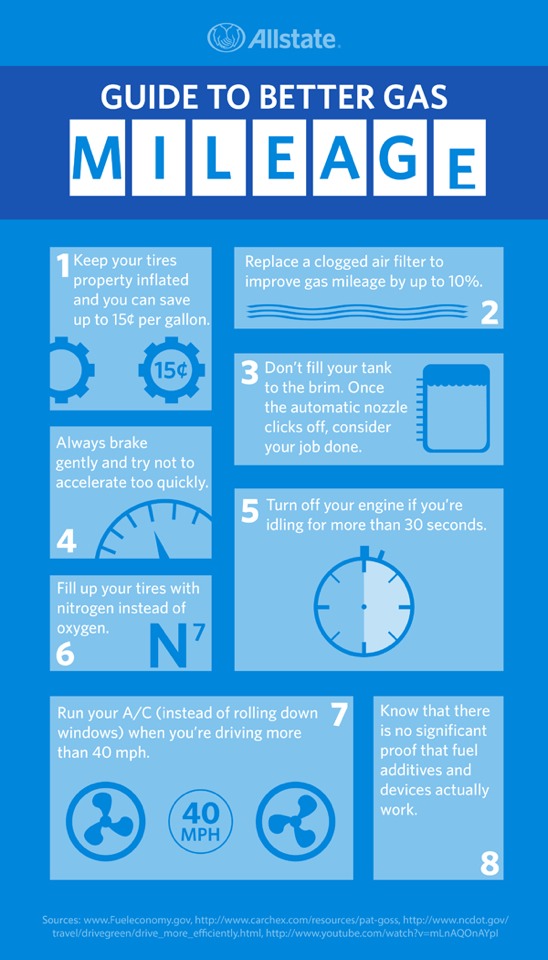Many vehicle owners are learning that filling their tires with nitrogen instead of compressed air can improve gas mileage, reduce uneven tread wear, and extend tire life. All of this is possible because nitrogen seeps out of tires more slowly than air does, so the tires remain fully inflated longer after being filled.
However, if you're using nitrogen in your tires, it's still imperative that you check them regularly and keep them inflated. So, how do you check the tire pressure in your nitrogen tires? We've done the research, and we have the answers for you!
Check the tire pressure on your nitrogen-filled tires the same way you would if they were filled with compressed air. Follow these steps:
Before you continue reading, let us say we hope you find the links here useful. If you purchase something through a link on this page, we may get a commission, so thank you!
In the remainder of this article, we'll describe these steps in more detail. We'll also discuss how to know if a vehicle's tires are filled with nitrogen, how long you can expect a nitrogen fill to last, and whether tires filled with nitrogen will ever go flat. We will address the pros and cons of using nitrogen in your tires, and we'll tell you where you can go to get a nitrogen fillup. Keep reading to learn all about tire inflation with nitrogen!
Contents
 Determine The Recommended Tire Pressure For Your Vehicle
Determine The Recommended Tire Pressure For Your VehicleConsult your owner's manual for the manufacturer's recommended level of inflation for your vehicle's tires.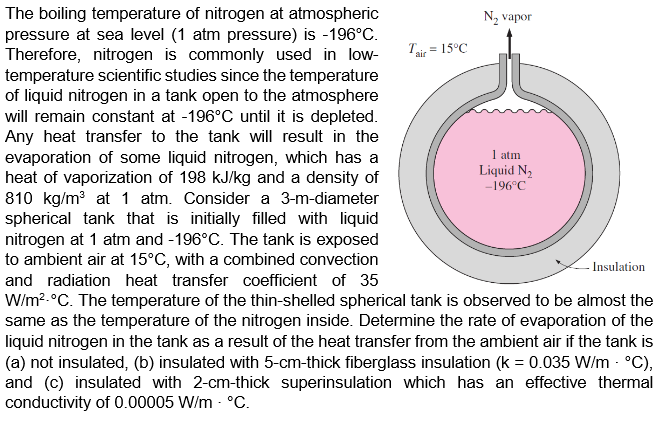 This number will be between 33 and 36 psi (pounds per square inch).
This number will be between 33 and 36 psi (pounds per square inch).
Turn the valve cap counterclockwise until it unthreads from the tire's valve stem. Lift it off the valve stem. Store it in your pocket or another safe place.
The inflow valve is a circular protrusion, with a small metal spike at its center, located at one end of the tire pressure gauge. It fits snugly over the tire's valve stem. When you connect it to the valve stem, you will hear a sharp hiss as nitrogen flows out of the tire. However, this sound will cease as soon as the gauge and valve stem are correctly connected.
The three most common tire pressure gauges are the stick gauge, dial gauge, and digital gauge. Here's how you read each of them:
This simple gauge is about the size and shape of a pencil.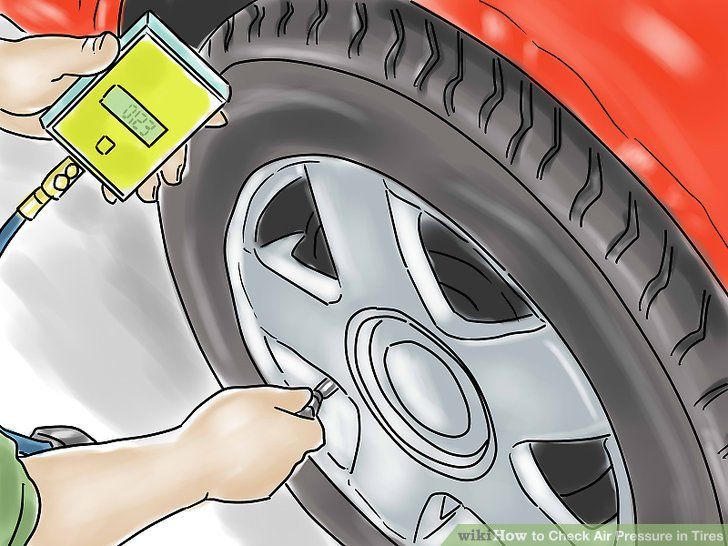 Inside its hollow metal body is a plastic stick with gradients marked on it. When you connect the gauge to the tire's valve stem, air pressure forces the stick out the bottom of the gauge. By reading the highest visible gradient on the stick, you can determine the tire's inflation.
Inside its hollow metal body is a plastic stick with gradients marked on it. When you connect the gauge to the tire's valve stem, air pressure forces the stick out the bottom of the gauge. By reading the highest visible gradient on the stick, you can determine the tire's inflation.
Click here for a stick gauge on Amazon.
Dial gauges are generally sturdier and easier to read than stick gauges. The dial and needle are protected by a transparent cover of glass or hard plastic. When you connect the inflow valve to the tire's valve stem, the needle moves until its point hovers over the mark, denoting the tire's inflation.
Click here for a dial gauge on Amazon.
The digital gauge is the most accurate of the three types. Connect it to the tire's valve stem and get a digital readout of the tire's inflation. Digital gauges typically include illuminated screens, so they're easy to use even at night. On the other hand, they require batteries, which can wear out over time.
Click here for a digital gauge on Amazon.
Once you've read the tire pressure, disconnect the gauge by pulling it off the valve stem. You may hear a very short hiss of air escaping as the gauge and valve disengage.
If the tire's pressure is more than 1.0 psi lower than recommended, top it off with more nitrogen. You can take your vehicle to a professional or do this at home. To top off your tires at home, you will need a tank of nitrogen, a digital tire inflator, and a portable nitrogen analyzer. Follow these steps:
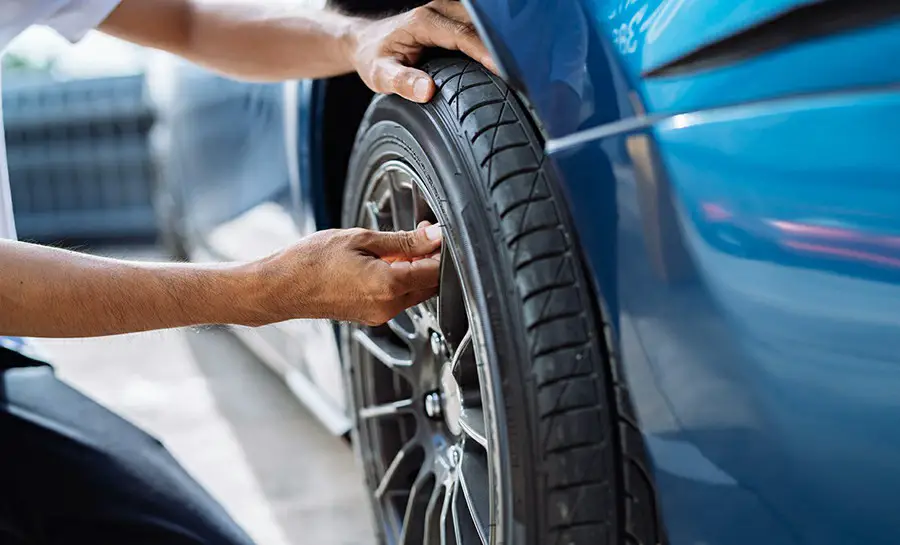
Once you have inflated the tire to the recommended psi, replace the cap on the valve stem by turning it clockwise until it is firmly threaded shut.
Repeat this process with your vehicle's remaining three tires.
Click here for a digital tire inflator on Amazon.
There's no way to tell, simply by looking at a tire, whether it's inflated with nitrogen or air. You could connect a portable nitrogen analyzer to the tire and determine what percentage of the gas inside the tire is nitrogen.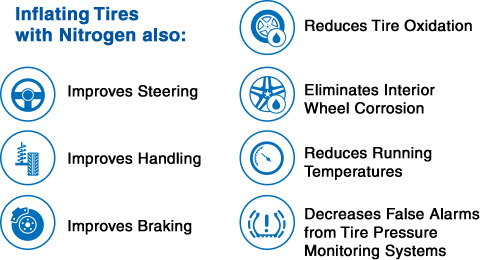
An air-filled tire will read about 78% nitrogen, while a reading of 95% or more means that the tire is inflated with nitrogen. A reading between 80% and 95% indicates a mix of nitrogen and air.
Using a nitrogen analyzer in this way, however, is a cumbersome task. There is a much simpler way to show that a tire is filled with nitrogen. You can replace the original valve stem cap with a green N2 (signifying nitrogen) button on its top. Most tire dealers use this method to identify nitrogen-filled tires, and the practice is catching on with many vehicle owners, as well.
Click here for N2 tire valve caps on Amazon.
Tires appear to be solid and impermeable, but they are composed of long strands of rubber that expand and contract as the tire moves. This allows air molecules to seep out slowly, causing the tire to deflate at a rate of about 1.5 psi per month.
Because nitrogen molecules are larger than air molecules, they do not seep out as quickly.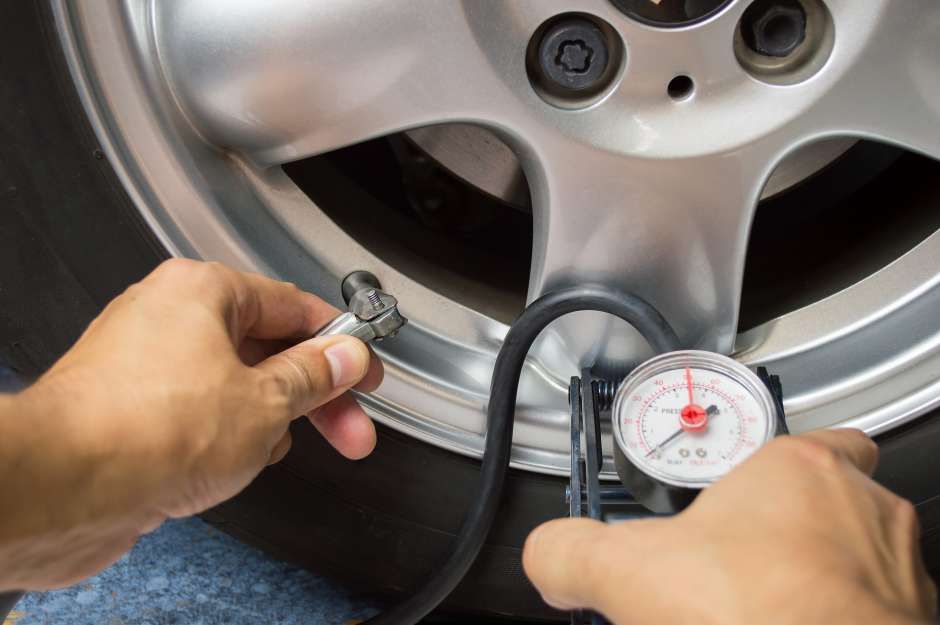 Nitrogen's diffusion rate is estimated to be 1/3 to 2/3 as great as that of normal air. So, nitrogen-filled tires lose inflation at a rate of about 0.5 to 1.0 psi per month.
Nitrogen's diffusion rate is estimated to be 1/3 to 2/3 as great as that of normal air. So, nitrogen-filled tires lose inflation at a rate of about 0.5 to 1.0 psi per month.
Although nitrogen-filled tires lose inflation more slowly, they will eventually go flat. Many owners don't check their nitrogen tires between oil changes, believing they will remain sufficiently inflated. However, in the three or four months between oil changes, even nitrogen-filled tires will lose 1.5 to 4.0 psi, enough to cause uneven tread wear, lower gas mileage, and tire damage.
Click here for a nitrogen window sticker on Amazon.
Proponents of nitrogen cite two major advantages:

Detractors, on the other hand, argue that there are two overriding disadvantages to using nitrogen:
Nitrogen for tires is not readily available, especially if you are traveling and don't know a local source. Few gas stations offer it.
Some automobile dealerships and tire stores provide nitrogen fills, usually for $5 or more per tire. Costco's discount retail store sells new nitrogen-filled tires and offers nitrogen fills for free, although you generally have to drop in and wait until a mechanic is available.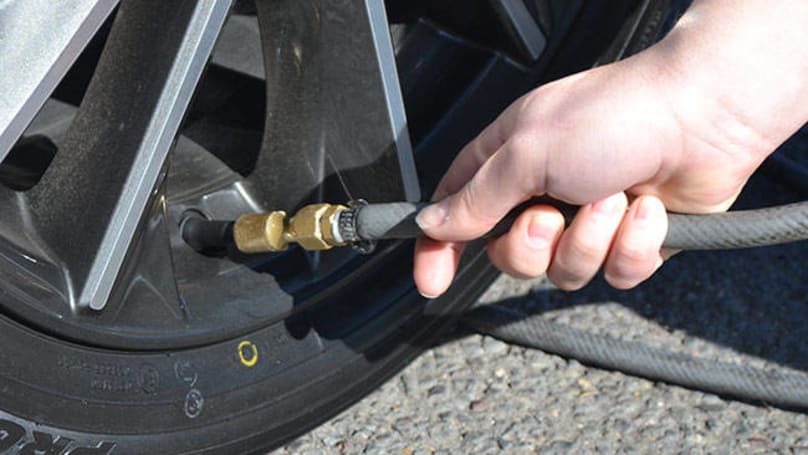
Currently, Walmart does not offer nitrogen tire inflation. However, as the popularity of nitrogen tires increases, it is likely that Walmart and other major discount retailers will begin offering this service.
Click here for nitrogen tank on Amazon.
Now that you know how to check your nitrogen-filled tires make sure you do it every month. Remember: although nitrogen tires lose inflation more slowly than air-filled tires, they still deflate over time. If you let them go too long, you'll miss out on all the benefits that nitrogen offers!
You may also enjoy:
Nitrogen In Tires: Pros And Cons
Here’s Why Driving with Bald Tires Can Kill You
We didn't find the posts for that URL.
The Ford F150 typically has a good set of built-in speakers. But you can upgrade the truck’s sound system to make your audio experience better than before. Now, you’re thinking about what speaker to get for this pickup truck. So we researched this concern for you and here’s what we found. Different options are available …
Now, you’re thinking about what speaker to get for this pickup truck. So we researched this concern for you and here’s what we found. Different options are available …
Read More about Ford F150 Speaker Upgrade – What Options Do You Have?
Adding oil is a good idea when replacing a component like a condenser on your car’s AC system. Want to know how to add Polyalkylene Glycol (PAG) oil? Luck on you! We’ve researched this matter to provide you with the answers you need. The steps for adding PAG oil to the AC condenser are as …
Read More about How To Add Pag Oil To AC Condenser
You installed a new battery in your Ford F-150. But the pickup truck won’t start after completing this task. Why did this problem occur? Also, how can you fix it? We researched this concern for your convenience, and here’s what we found. After replacing your Ford F-150’s battery, the vehicle may not start because it …
Read More about Ford F150 Won’t Start After Replacing Battery
Even if you don’t know much about cars, you likely know that tires are an important component when it comes to a vehicle’s overall operation and performance. And perhaps you’ve heard that tire size can affect fuel economy. So, do they? We did the research to bring you the answer. The bigger the tires, the …
And perhaps you’ve heard that tire size can affect fuel economy. So, do they? We did the research to bring you the answer. The bigger the tires, the …
Read More about Do Bigger Tires Affect MPG & Does Tire Width Matter?
The Nissan Juke’s compact design might lead you to think that it can’t carry a lot of weight. If you purchased one of these popular model vehicles and are wondering what its limits are, we can help you. We researched the Juke in depth so you’ll know how much weight it can carry on board. …
Read More about How Much Weight Can A Nissan Juke Carry?
The water tanks aboard an RV give you the added creature comforts of hot showers and indoor bathrooms while you camp. But when there’s a mishap, it can spell trouble. If your black water tank sensor is reading full when you know that it’s empty, you’ll need to act. Thankfully, we’ve been able to identify …
Read More about My Black Water Tank Shows Full When Empty – Why And What To Do?
Hondas are affordable and reliable cars, especially the old ones.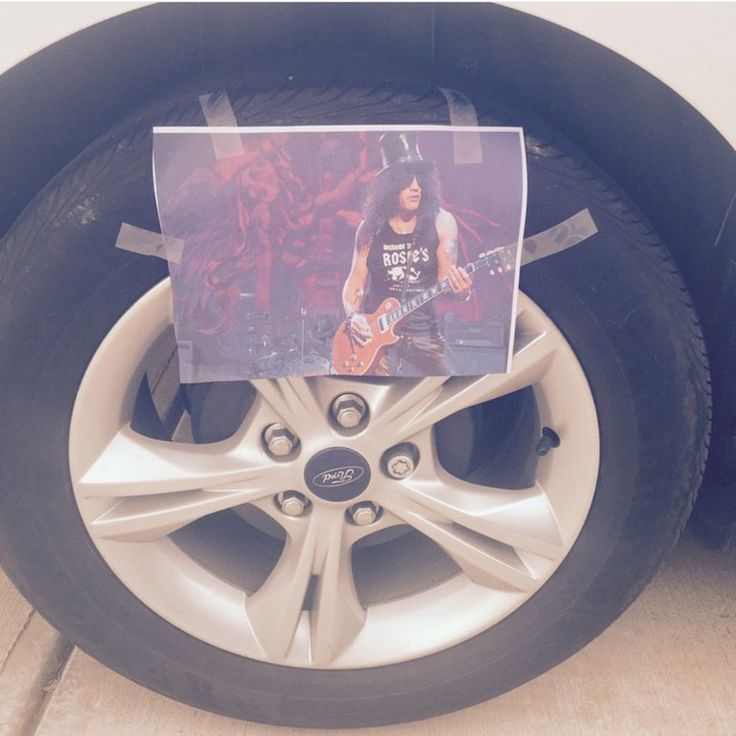 With loads of available parts for these cars, you might wonder if you can mix and match them. With the help of experts, we will determine if you can put a VTEC head on a non-VTEC engine. Yes, you can put a VTEC head on …
With loads of available parts for these cars, you might wonder if you can mix and match them. With the help of experts, we will determine if you can put a VTEC head on a non-VTEC engine. Yes, you can put a VTEC head on …
Read More about Can I Put A VTEC Head On A Non-VTEC Engine?
Are you new to gardening and landscaping? You have a 2-stroke lawn mover. Wondering what’s the best oil to use? You are on the right page! We have done the leg work for your convenience. Here’s what the experts say. For 2-stroke lawn mowers, SAE 30 is the best oil to use that is suited …
Read More about What is the Best Oil for 2 Stroke Lawn Mower?
HomeLink’s official instructional videos and manuals specifically state that you need your garage door opener’s remote controller before you can program your car’s HomeLink system. However, some people who have misplaced or damaged their remotes have been led to believe that they can do the programming without a garage door remote.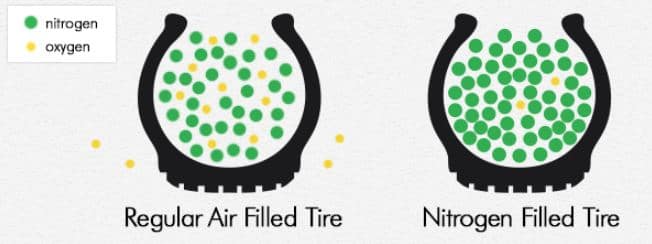 Can this be done? …
Can this be done? …
Read More about How To Program Homelink Without A Remote [Quick Start Guide!]
Motorcycle rides are fun but can also harm the rider and the motorcycle. As you gear up for a ride, you may ask if there is a way to protect the motorcycle. Engine guards are made to protect the motorcycle and its rider during falls and slides. Which engine guard should you get? We did …
Read More about 11 Affordable Engine Guard Ideas For Your Bike
When riding in your John Deere Tractor on a hot day, the air conditioning can make all the difference. But when the air conditioning is blowing warm, then more than likely, your tractor is low on refrigerant. Let’s take a look at how to recharge the system. To add refrigerant to your John Deere Tractor, …
Read More about How To Add Refrigerant To My John Deere Tractor
For over 100 years, Harley Davidson has been a love for many bike riders.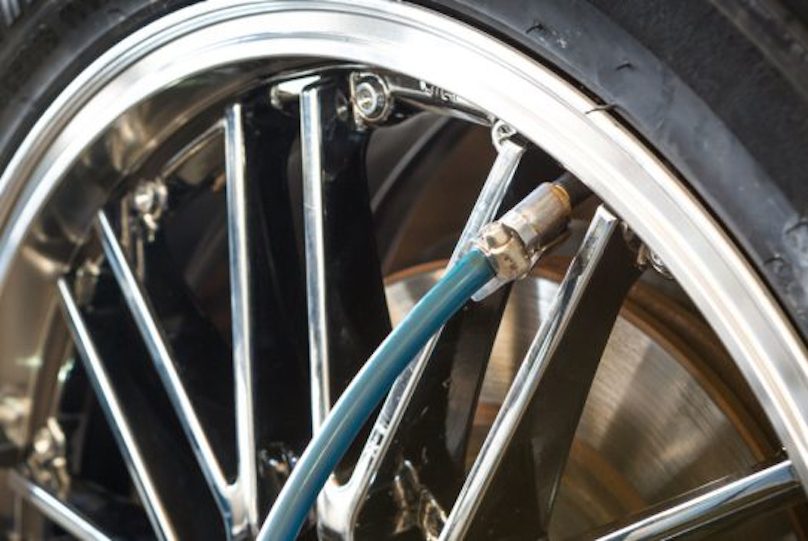 However, what bike riders don’t love is when their motorcycle won’t start and only clicks. To help them out, we have listed the possible reasons and solutions to this problem. If your Harley Davidson is not starting but only clicking, then …
However, what bike riders don’t love is when their motorcycle won’t start and only clicks. To help them out, we have listed the possible reasons and solutions to this problem. If your Harley Davidson is not starting but only clicking, then …
Read More about Harley Davidson Is Not Starting, Just Makes Clicking Noise – What Could Be Wrong?
It is a hassle when you are on a trip, and your Ford satellite radio is not receiving a signal from the satellite. After checking the battery, the connection, restarting the car, and resetting the radio, you still get a “FAULT” error. Are you wondering where this message error coming from? We’ve done research to …
Read More about Ford Satellite Radio Antenna Fault – What To Do?
If your Chrysler Pacific is jerking when you accelerate, it can be a scary feeling. Though there are a variety of things that could be causing the problem. Let’s take a look at some of the potential causes to help you get to the bottom of what’s going on.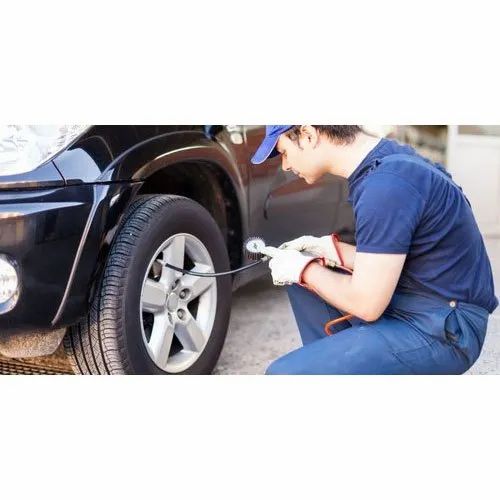 If your Chrysler Pacifica is jerking …
If your Chrysler Pacifica is jerking …
Read More about Why Is My Chrysler Pacifica Jerking When Accelerating?
Whether you are wanting a truck for pulling a large travel trailer or need one to tow heavy loads as a work vehicle, finding one with the right towing capacity can seem overwhelming. With so many models to choose from, it can take a bit of work to narrow down the options. Should you need …
Read More about What Pickup Trucks Can Tow 7,000 Lbs?
If you own a Ford F-150 and its gauges start malfunctioning, you may be wondering about the cause of this issue and how to fix it. Luckily, we have done some research for you, and here is what we found. Problems like a blown fuse, bad alternator, faulty sensor, and defective instrument cluster can cause …
Read More about Ford F-150 Gauges Are Going Crazy – Why? What Could Be Wrong?
Consumers looking for a larger family vehicle will often consider a minivan. These are great for seating seven to eight riders comfortably and will always accommodate infant and child safety seats. Should you be considering a Chrysler Pacifica and are wondering how to install a car seat, we can help. We researched the Pacifica in …
These are great for seating seven to eight riders comfortably and will always accommodate infant and child safety seats. Should you be considering a Chrysler Pacifica and are wondering how to install a car seat, we can help. We researched the Pacifica in …
Read More about How To Install A Car Seat In Chrysler Pacifica
Running low on fuel is never a good situation, so carrying spare fuel is a good idea, especially on long travels. But what if you don’t have a funnel to help pour the fuel into your car? With information from experts, we will help you fill your car up with fuel using different methods. If …
Read More about How To Put Gas In A Car Without Funnel
Oil is the lifeblood of any truck engine. Ensuring that your engine is using the recommended brand and grade will not only keep it running smoothly but will also keep it on the road longer. If your truck is equipped with a 7.3 IDI engine and you are wondering what oil it needs, we can …
Read More about What Is The Best Oil For 7.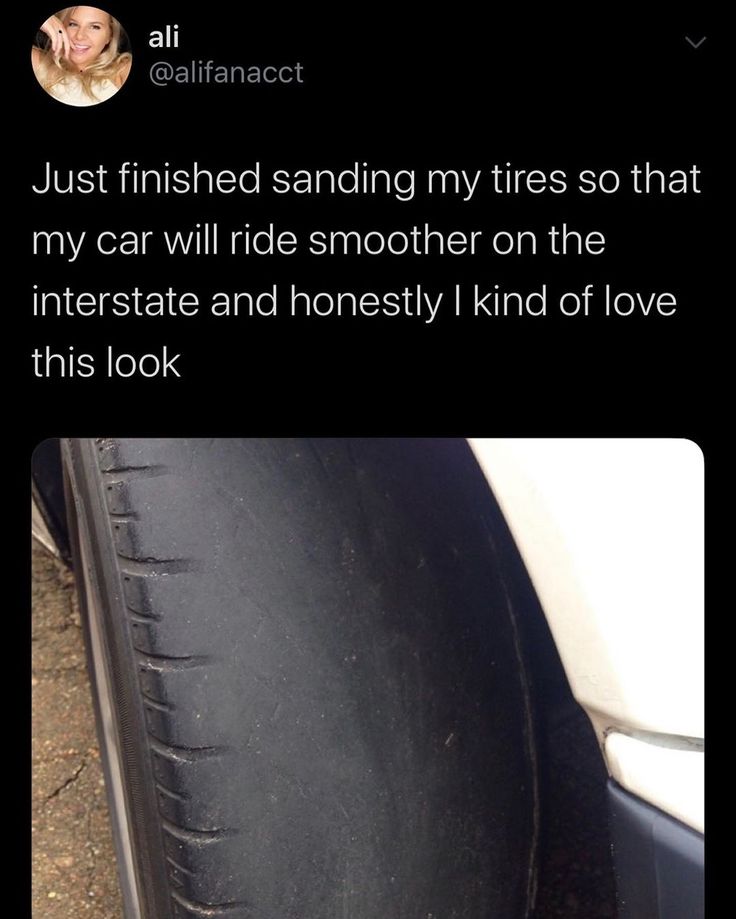 3 IDI?
3 IDI?
Like any vehicle, a motorcycle engine can overheat if it’s worked too hard for too long. So, what is a normal engine operating temperature? We did the research to bring you the answer. A motorcycle engine typically operates at between 150-220 degrees Fahrenheit. However, this range can differ slightly depending on the make, model, driving …
Read More about How Hot Does A Motorcycle Engine Get?
Tesla continues to dominate the market for battery-electric vehicles as they increase manufacturing to keep up with rising consumer demand. You may be wondering how much time it takes to charge a Tesla, especially in public charging stations, as more and more consumers switch to electric vehicles. That’s why we looked into this matter, and …
Read More about How Long Does It Take To Charge A Tesla At A Public Charging Station?
Engines need block heaters to warm them before ignition. These heaters are helpful during cold weather in reducing damage from idling and cold starts. Are you planning to install a magnetic engine block heater in your car to prepare for winter? We’ve researched the topic to help you out. Using a magnetic engine block heater …
Are you planning to install a magnetic engine block heater in your car to prepare for winter? We’ve researched the topic to help you out. Using a magnetic engine block heater …
Read More about How To Install A Magnetic Engine Block Heater
Grease can gunk up your pressure washer, preventing the machine from doing its job efficiently. So now you’re thinking about buying the best engine degreaser for your pressure washer. We researched and consulted with industry experts to help you with this concern. Remember, take the time to make your selection to degrease your pressure washer. …
Read More about What Are The Best Engine Degreasers For A Pressure Washer?
Having a nail stuck in the tire of your car can be unpleasant. However, accidents happen, and the best you can do is to be well prepared. We’ve researched how long you can drive with a nail in your tire, so keep on reading, as we’ll help you out with this unfortunate scenario.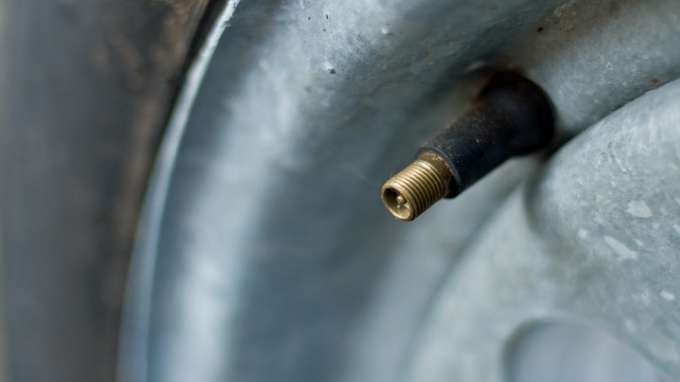 How long …
How long …
Read More about How Long Can You Drive With A Nail In Your Tire?
Many car care enthusiasts swear by oven cleaner solutions as the best products to clean engines with. However, many car detailing professionals still recommend using proper engine degreasers for under-the-hood cleaning. So what is the difference between oven cleaners and engine degreasers? We’ve done the research for your convenience. Although both engine degreasers and oven …
Read More about Oven Cleaner Vs Engine Degreaser [What Is The Difference?]
Your Harley Davidson’s security system is a great way to keep your bike protected. But what would cause the alarm to keep going off on its own? Let’s take a look at the possible culprits of this issue below. If your Harley Davidson alarm keeps going off, then it could be due to the following: …
Read More about Why Does My Harley Davidson Alarm Keep Going Off?
You may have seen the car prank where someone wraps a car with cling film, also known as saran wrap.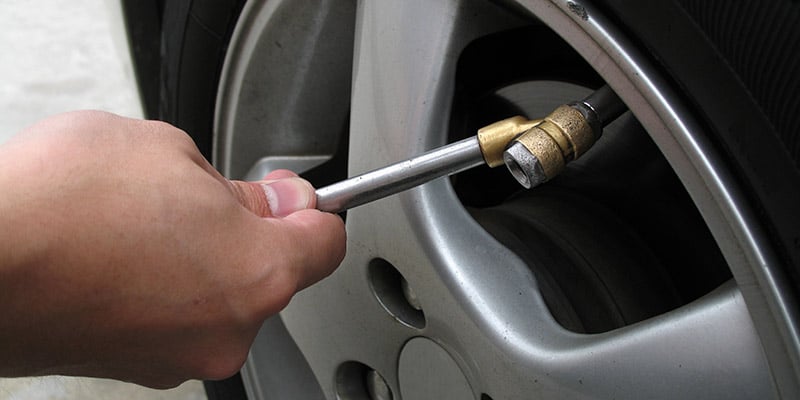 While this may be funny, can it damage the car paint? Let’s take a look to see if this prank can go wrong. If the vehicle is dirty and then wrapped in saran wrap, it …
While this may be funny, can it damage the car paint? Let’s take a look to see if this prank can go wrong. If the vehicle is dirty and then wrapped in saran wrap, it …
Read More about Does Cling Film Damage Car Paint?
Freon plays a vital role in your vehicle’s air conditioning system to ensure it functions properly. However, if your car’s air conditioning isn’t blowing cold, how do you check your Freon levels? Let’s take a look at the steps below. To check your vehicle’s Freon levels, follow these steps: Open the hood. Attach refrigerant gauges …
Read More about How To Check Freon Levels In My Car?
If you are worried that your motorcycle exhaust is getting too hot, then knowing normal operating temperatures can help put your mind at ease. Most modern bikes have exhaust temperature warning lights that will come on if things get too heated, but it’s still good to know what is considered “normal” so you can gauge …
Read More about How Hot Does A Motorcycle Exhaust Get?
If you’re in the market for a Mercedes Benz, one question that will most likely pop up in your mind is how many miles will this car last? And how many years will I get out of my purchase? Don’t worry, because we’ve diligently searched trustworthy sites to give you the answer. Most Mercedes Benz …
Most Mercedes Benz …
Read More about How Many Miles Can A Mercedes Last (Breakdown By Model)?
The Ford SYNC 3 navigation features make it convenient for everyone to travel to their destination, but what if your SYNC 3 display shows the “Navigation Fault, visit dealer for assistance” or “Navigation Fault, Navigation is not operating properly” error? Well, we researched this issue and have the answer for you. If your Ford SYNC …
Read More about How To Fix The Ford Sync 3 Navigation Fault
If you’re trying to install a new axle and it isn’t seating all the way, you may be feeling frustrated. Even though you bought the same size axle as the original and hammered it, there’s still no progress. We did our research on how to push an axle all the way in, and here’s what …
Read More about Axle Not Going In – Why And How To Push It In All The Way?
Your Ford Expedition windshield is dirty, and you want to clean it. But when you activate the windshield washer, water does not flow out. What could be causing this, and how do you fix the problem? We researched to help you understand the causes and how to solve this issue. To fix a malfunctioning windshield …
But when you activate the windshield washer, water does not flow out. What could be causing this, and how do you fix the problem? We researched to help you understand the causes and how to solve this issue. To fix a malfunctioning windshield …
Read More about Ford Expedition Windshield Washer Not Working – What To Do?
Your car’s navigation system can be your best friend when you’re trying to drive to new areas or detouring out of a traffic jam. However, when the screen gets scratched or cloudy over time, you may have trouble using the whole infotainment system. So how do you remove scratches from the navigation screen? We’ve done …
Read More about How To Remove Scratches From Car Navigation Screen
Are you planning to install new armrest seat covers, but you need to remove the armrest first, and you want to know how? You’ve come to the right place, for we have researched this question, and we have the answer for you.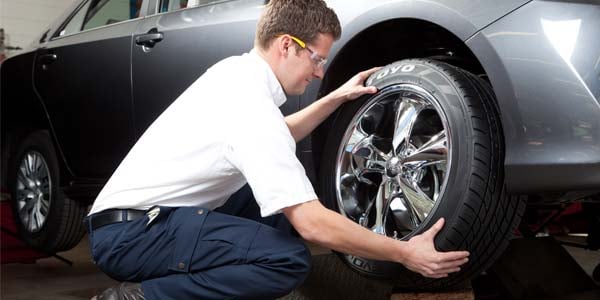 The common characteristic of different armrests is that they are held in place …
The common characteristic of different armrests is that they are held in place …
Read More about How To Remove An Armrest From A Car Seat?
Like any diesel, the EcoDiesel needs diesel exhaust fluid (DEF) to help reduce emissions. But what is the best diesel exhaust fluid for the EcoDiesel, and when should you add it? Let’s take a look below. For the EcoDiesel, it’s best to use a diesel exhaust fluid that’s certified to meet the ISO 22241 standard. …
Read More about What Is The Best Diesel Exhaust Fluid For EcoDiesel? [And When To Add It]
Different model vehicles will need their fluids changed out at different intervals. If you own a Chrysler Pacifica and are wondering when you should change the oil out in it, we have the answer for you. We researched this popular vehicle in depth so you’ll know when to get this vital piece of routine maintenance …
Read More about When Should I Change The Oil In My Chrysler Pacifica?
Despite the rise of many streaming service platforms, Netflix still leads in subscriptions in America as of 2021. If you’re a Honda Odyssey owner, you know how convenient it can be to keep your minivan’s passengers entertained with videos, especially on long trips. So how do you watch Netflix in a Honda Odyssey? We’ve done …
If you’re a Honda Odyssey owner, you know how convenient it can be to keep your minivan’s passengers entertained with videos, especially on long trips. So how do you watch Netflix in a Honda Odyssey? We’ve done …
Read More about How To Watch Netflix In Honda Odyssey
Your car’s braking system is vital to your safety on the road. But why would your brake light be turning on and off? What could cause this? Let’s take a look at some possible culprits. If your brake light is turning on and off while driving, it could be due to the following: Low brake …
Read More about Why Is My Brake Light Turning On And Off? What Could Be Wrong?
Freon is a refrigerant gas that is commonly used to ensure your car’s air conditioner is working properly. But does Freon have any effect on the heat in your car? Let’s take a look below. Freon won’t affect how the heat is produced in your car. The heat is produced by the engine and the …
Read More about Does Freon Affect The Heat In A Car?
Do you need to replace the head gasket of your car, and do you want to know if you can use a gasket maker for the head gasket? You’ve come to the right place, for we have researched this question, and we have the answer for you.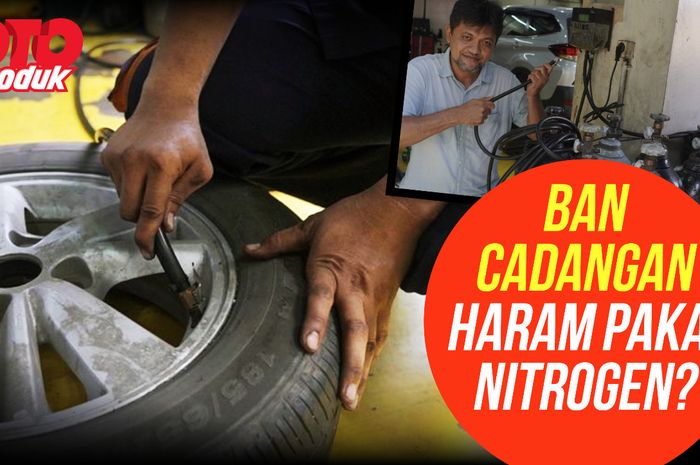 You cannot use a gasket maker on a …
You cannot use a gasket maker on a …
Read More about Can You Use Gasket Maker On A Head Gasket?
Motorcycles are a popular means of transportation in many parts of the world with only two or sometimes three wheels. But how many axles does a motorcycle have? We did the research to bring you the answer. A motorcycle typically has two axles: a front wheel and a rear wheel. The axles’ job is to …
Read More about Do Motorcycles Have Axles? [And How Many?]
Accidentally parking your car under oak trees can result in acorns falling and denting your car’s roof, hood, and trunk. In the unfortunate circumstance this happens, how can you remove the acorn dents? Let’s take a look at the best course of action below. If you have dents in your car from acorns, then it …
Read More about How To Remove Acorn Dents From My Car?
For those who aren’t in the habit of lighting a cigarette or two while on the road, the smell of smoke is one of the worst odors to have inside a car. It’s generally difficult to purge the smell from a vehicle. Don’t worry, as we will cover ozone generators and how they can help …
It’s generally difficult to purge the smell from a vehicle. Don’t worry, as we will cover ozone generators and how they can help …
Read More about Ozone Generator To Remove Smoke Smell In Car – How To?
Engine cleaning removes accumulated dirt, oil, grime, and grease and ensures the continued performance of your engine. Various products for engine clean-up are available, including Simple Green. But which product is the best for cleaning your engine? We have done the research and found the answer for you. Simple Green All-Purpose Cleaner is the best …
Read More about Simple Green Vs Engine Degreaser [Which To Choose To Clean Your Engine?]
Many car enthusiasts want the best for their favorite "steel horses", and do not skimp on the purchase of various additional equipment and services. One of these services, which has become very popular now, is filling tires with nitrogen instead of air.
The first thing that the tire service stations that provide this service operate with is that in Europe everyone has long since switched to nitrogen, since this has only positive qualities.
If you pump nitrogen instead of ordinary air, and even inexpensively, and according to the assurances of service workers, there are a lot of pluses from this, then why not pay for such a service.
In addition, many car enthusiasts who have used nitrogen inflated tires claim that the car behaves better on the road.
Let's try to understand more specifically the positive properties of nitrogen as a car tire filler.
So, many car services that provide this service, as well as car owners who have used it, claim that:

Such a number of positive aspects cannot but interest the car owner, because for a little money you can improve the driving performance of the car, "prolong the life" of the wheels, and even save on fuel.
But in order to understand whether all this is really so, one should take a deeper look at each and the positive aspects of the use of nitrogen.
For those who have forgotten the school chemistry course, let us remind you that the air around us already consists of 78% nitrogen. Only this can already dispel half of the positive qualities of using this gas in wheels.
It does not come out of the tire.
About the fact that nitrogen leaves the wheel less than air.
It is indicated that nitrogen molecules are larger than oxygen molecules, therefore they cannot pass through microcracks in the slope - pressure is not lost.
Even so, in a wheel filled with ordinary air, the amount of oxygen varies from 17 to 20%, and the rest is various impurities, including not pure nitrogen.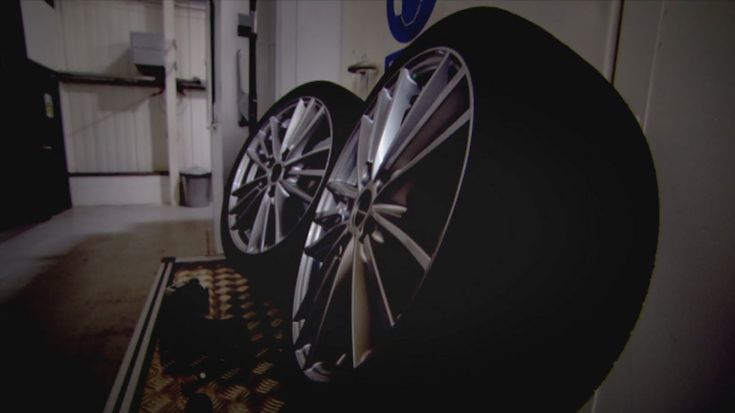 And such a percentage cannot significantly affect the pressure in the slope due to leakage through cracks.
And such a percentage cannot significantly affect the pressure in the slope due to leakage through cracks.
And if you look at it objectively, then the losses through microcracks in the wheel will be so small that they cannot somehow affect the pressure in the slope.
And the size of microcracks is not indicated, into which oxygen passes, but nitrogen can no longer.
Almost an anecdote about this has appeared among knowledgeable car owners. Like, if nitrogen cannot pass through microcracks, and only oxygen comes out, then after several pumping of the wheels, only one nitrogen will remain in the tires, because after each pumping, after a certain time, oxygen will come out, and only nitrogen will remain in the slope.
Nitrogen holds pressure.
The second myth that is given as a plus is that nitrogen, due to its coefficient of thermal expansion, does not change much in volume with temperature changes, so the pressure in the tire remains stable.
Physics will come to the rescue here. According to Gay-Lussac's second law, at a constant volume, and the internal volume of a tire is such, the pressure-temperature ratio is constant for any gas or gas mixture.
To put it simply, when the temperature drops, the pressure in the tire will decrease equally when the inner space of the wheel is filled with air and nitrogen.
Yes, and again, in the air 78% nitrogen, and the rest 22% , such a ratio cannot greatly affect the change in pressure.
Based on this, there is no particular pressure stability in the tire when using nitrogen.
Nitrogen provides better grip and handling.
Now about the effect of nitrogen on the tire itself. So, it is indicated that when using nitrogen, the rubber becomes more elastic, so grip is better, and wear is less.
This gas cannot affect the molecular structure of the rubber in any way, so the elasticity of the rubber will not change.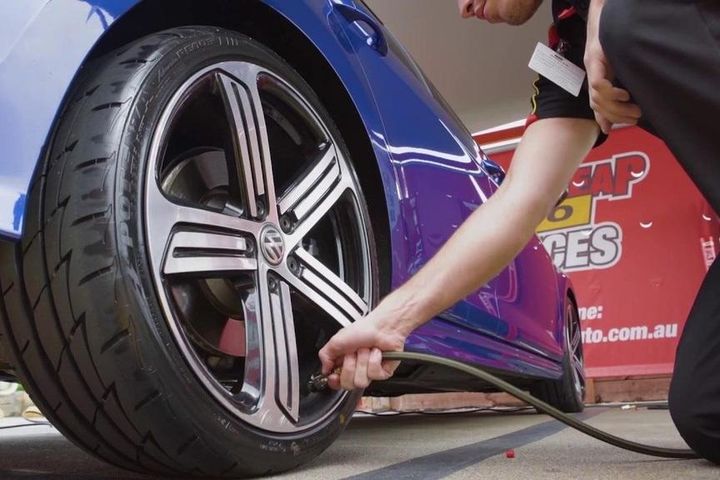
Tire traction and wear resistance are dependent on tread pattern, design features, material of manufacture, tire pressure and road surface.
It can be seen from everything that nitrogen can only affect the driving performance of a tire with its pressure. But ordinary air will have the same effect.
Nitrogen "reduces" fuel consumption.
Regarding wheel weight reduction and impact on fuel consumption. In an inflated wheel, the mass of air is less than 100 grams.
Even if nitrogen is lighter in weight, but 4/5 of the air consists of it, so filling the wheel with pure nitrogen will reduce its weight by only a few tenths of a gram, which will practically not affect the total mass of the ramp.
And if the mass practically does not change, then what kind of fuel economy can we talk about.
Nitrogen does not attack metal.
Indeed, nitrogen, being an inert gas, does not react with metal. Oxygen present in the air, as well as various impurities, including water vapor, oxidize the metal.
Here, there seems to be a positive quality of using nitrogen in the form of a tire filler.
But if we judge objectively, then for the process of metal oxidation to completely destroy the cord, or even more so the car disk, it takes time, and so long that not only the tire or disk itself leaves this period, the car itself is unlikely to “live” until that moment when the ramp cannot be used due to rusty cord.
Therefore, this positive quality is practically useless.
Impact on rubber.
The same applies to such a positive quality as the absence of harmful effects on rubber.
Nitrogen will not affect the rubber, but it is only inside the chute, while the outer part is constantly in contact with air, so such a useful property of nitrogen is actually just words.
Nitrogen is used even in Formula 1.
A little bit about the fact that the slopes for sports cars are filled with nitrogen. Formula 1 cars actually fill tires with special gas mixtures consisting of several components, among which nitrogen is often included.
But it uses a special compound that can really have some positive effect, but it is worth considering that the speeds, roads, and the tires themselves in Formula 1 differ significantly.
The most interesting thing is that many services offer the injection of nitrogen-based mixtures, rather than pure nitrogen, where this gas occupies 90-95 % of in the mixture.
The availability of special gas generators really makes it possible to achieve such a percentage, but not all service stations have these generators.
Moreover, these same services claim that their mixture is unique and it is absolutely impossible to add air or another mixture to it.
But the same gas generator is only able to remove oxygen and other substances from the air.
That is, the initial gas is still the same air, and adding it to nitrogen or a mixture based on it, pumped into the tire, will not change anything.
Nevertheless, many car owners believe in these positive qualities of nitrogen, and as proof they cite one of the most basic arguments - the car "goes" softer.
But in reality, often such an obvious plus is just a banal under-inflation of tires to the desired level of pressure.
As a result, the tire perceives road bumps more on itself, and does not transfer them to the suspension.
But there are much more negative qualities in under-inflation - the contact patch of the tire with the road is larger, which leads to more intensive wear and also increases consumption.
As a result, it turns out that all the hype about the benefits of nitrogen as a tire filler is just a marketing ploy aimed at additional costs from the pocket of car owners in favor of car services.
It is worth mentioning the notorious "green" caps, which are installed on the spool after filling the tire with "pure" nitrogen.
Just by paying N sum, the car owner will receive a set of caps painted green.
But the caps themselves will cost much less if you buy them on the market than to get them "as a gift" from the service station when pumping nitrogen into the wheels.
I am especially not happy that even small tire shops will fill the wheels of your car with nitrogen for a decent amount, even showing a cylinder with the inscription "Nitrogen", which in fact turns out to be just a receiver of a conventional compressor, only you will have to pay extra for air.
And finally, I would like to mention one more autobike, in which the fair sex, who is not particularly versed in cars, was pumped into the wheels by cunning tire fitters, exclusively for her, for an additional fee, nitrogen supposedly with a strawberry flavor.
So all this publicized fuss about the very beneficial properties of filling car tires with pure nitrogen is just another way to get "a little money" out of the pocket of a gullible car lover.
But this is purely our personal conclusions.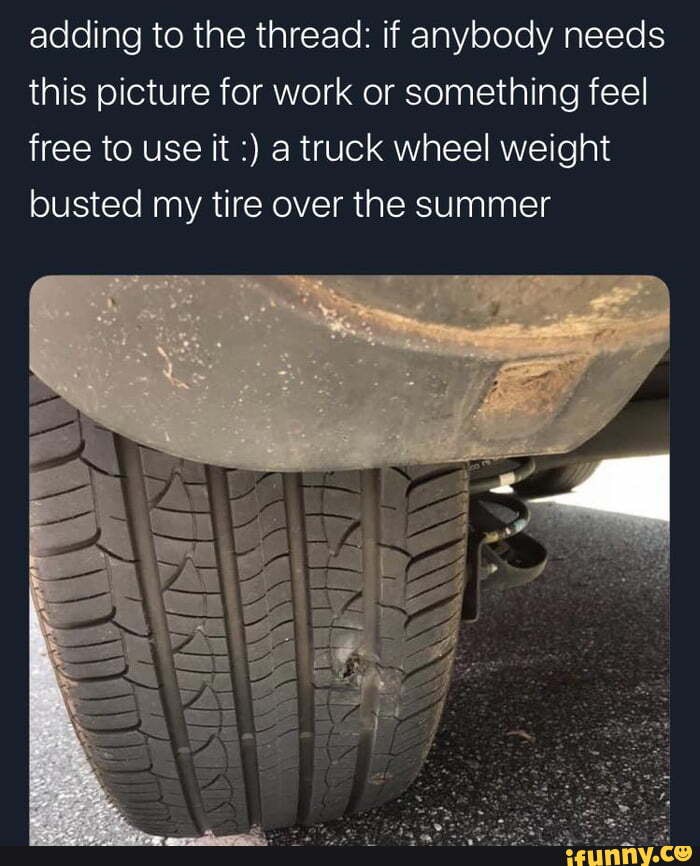
There is another more common opinion. Think and analyze.
Green valve caps usually indicate that the tires are filled with nitrogen instead of ordinary air. Car dealerships, tire dealers, repair shops, and even some gas station chains have long touted nitrogen as an alternative to replacing air in tires, talking about its benefits. As a result, filling tires with nitrogen has become popular among some car owners. Today we will try to figure out who the nitrogen supporters are right or those motorists who prefer to inflate the wheels with air, what is this marketing or a real step forward.
1. The advantages of tires with nitrogen filling
2. Criticism
3. What is science and research
4.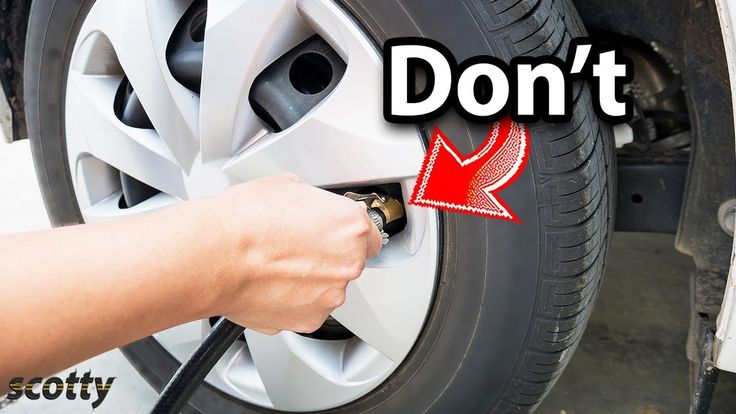 Where did the fashion for nitrogen
Where did the fashion for nitrogen
5. does it make sense to fill tires with nitrogen
6. Conclusion
7. Frequently asked questions and answers to them
in them falls more slowly than if they were filled with air. This is true, because nitrogen molecules are larger than oxygen molecules, of which air is partly composed. This allows you to think that, the pressure in tires filled with nitrogen, you can check less often, or even completely forget about this procedure. The advantages of ideal constant tire pressure are: reduced fuel consumption, extended tire life, good vehicle handling. Also, supporters of the use of nitrogen say that due to the moisture contained in the air, dry rotting of tires, corrosion of disks, and failure of TPMS sensors occur. Nitrogen filling, on the contrary, guarantees the absence of moisture and prevents all these undesirable processes. In addition, it provides a more stable temperature inside the tire.
The first thing to start with is that a tire filled with nitrogen contains not 100% of this gas, but from 93 - 95%, while ordinary air consists of 78% nitrogen, so the difference is not so small.
The next thing is that nitrogen still leaves the tires over time, although not at the same rate as air. Therefore, when using nitrogen, you will still need to check your tire pressure from time to time to make sure it is still at the recommended level. In addition, whether a tire is filled with normal air or nitrogen, it will lose pressure if, for example, its valve is defective, or the tire is not installed and sealed properly, or the tire has any damage. Changes in air temperature also cause pressure fluctuations in tires filled with nitrogen.
It is also important that filling tires with nitrogen costs money, and places where you can do it along the way are rare, so you need to go specifically to fill the tires, instead of doing it with a regular pump in your garage.
For these reasons, many tend to believe that the benefits of nitrogen are exaggerated.
All gases expand when heated and contract when cooled, and so does tire pressure. Tire pressure can rise and fall as the ambient temperature changes. In fact, ambient air contains about 78% nitrogen, 21% oxygen and 1% other gases, as stated above, nitrogen for tires contains 93 - 95% nitrogen. The difference is not that big, so why is nitrogen used?
1. First of all, because nitrogen is an inert (non-combustible) gas, in fact, it is nothing but air with oxygen and moisture removed. In some areas, the inertness of nitrogen comes in very handy.
2. Tires naturally lose air over time, especially when they are subject to temperature fluctuations. This is because tire walls are porous at the molecular level. When a tire heats up, the air inside it expands. The extra pressure pushes a small amount of air through the pores, so sometimes you have to pump air even if the tires are intact. In theory, nitrogen tires don't lose pressure as quickly as air tires because nitrogen molecules are larger than air molecules. This means that a nitrogen-filled tire will require less frequent inflation.
In theory, nitrogen tires don't lose pressure as quickly as air tires because nitrogen molecules are larger than air molecules. This means that a nitrogen-filled tire will require less frequent inflation.
At the same time, the American magazine Consumer Reports, which publishes reviews and comparative tests of consumer goods and services, has conducted research on this subject. Surprisingly, the researchers found only a negligible difference in deflation between tires filled with nitrogen and tires filled with regular air. On average, tires filled with air showed a loss of 0.24 atmospheres, and tires with nitrogen lost an average of 0.15 atmospheres after 12 months - this is not a difference that is enough to clearly affect fuel consumption or tire wear. In addition, the US Tire Manufacturers Association also issued a statement regarding the practice of using nitrogen to fill passenger tires. According to them, nitrogen "can contribute to a slight reduction in tire pressure loss. "
"
Nitrogen came to passenger car tires from highly specialized areas, where its inertness (not flammability) is most important. For example, it is used for refueling aircraft tires, mining equipment. In addition, its popularization played into the hands of the use of racing tires in tires. Nitrogen is used in professional racing, where extreme speeds are involved. Nitrogen reduces tire pressure fluctuations. In competition conditions, even small drops can affect handling, and, consequently, the result.
In general, filling with nitrogen is not required for ordinary consumer tires, however, this does not harm the tires and may slightly help reduce pressure losses. It makes perfect sense to fill tires with nitrogen when buying a new car with new tires being filled for the first time, also when you have extra income and love your car. There are stronger arguments in favor of using nitrogen, but they do not apply to passenger cars. For example, this makes sense in the harsh conditions of tires in the commercial trucking industry.
For example, this makes sense in the harsh conditions of tires in the commercial trucking industry.
In a debate between those who choose nitrogen/air, there doesn't have to be one answer. Regardless of what you fill your tires with, the most important aspect of tire maintenance is maintaining the correct pressure. Properly inflated tires wear more evenly, save fuel, improve handling and last much longer.
1) Can you mix air and nitrogen? - So, you filled up the tires with nitrogen, but during the trip you noticed that the tire is flat. Nitrogen is not available at nearby gas stations. Is it possible to inflate the wheel with air? Of course! Mixing nitrogen and air does not lead to adverse chemical reactions, but only reduces the density of nitrogen and its effectiveness.
2) How safe is nitrogen? - As safe as normal air. Nitrogen is non-flammable and chemically harmless.
3) Can I reduce fuel consumption by using nitrogen? - You will always get the best fuel economy on properly inflated tires, whether filled with nitrogen or air.
4) Does nitrogen prevent dry rotting of tires? Disc corrosion? - Compared to air, nitrogen is a "dry" gas, so it doesn't release as much moisture inside the tires. However, rubber rotting due to moisture inside the tires is extremely rare. It is much more likely that the tread will be worn out before the tire begins to decompose from dry rot, unless the car is laid up. Modern alloy wheels have a coating that prevents corrosion, so they can come into contact not only with moisture, but also with water.
5) Do tires filled with nitrogen heat up less? - From the point of view of using a normal car, and not a racing car, there is no significant difference between tires filled with air and tires filled with nitrogen.
6) Does the car's handling improve when nitrogen is added to the tires? - There is no difference in handling or ride quality between tires filled with air or nitrogen, provided they are properly inflated.